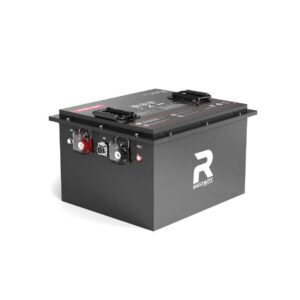What Are the Key Considerations When Purchasing Wholesale RV Batteries
FAQ Answer: Wholesale RV batteries require evaluating battery chemistry (like lithium vs. lead-acid), capacity (Ah), voltage compatibility (12V/24V/48V), cycle life, and supplier certifications. Lithium iron phosphate (LiFePO4) dominates due to lightweight design, high energy density, and 4,000+ cycles. Bulk buyers prioritize bulk pricing, OEM partnerships, and warranties covering thermal stability and capacity retention.
How Do Lithium Iron Phosphate Batteries Outperform Traditional Options?
LiFePO4 batteries provide 50% weight reduction versus lead-acid, 80% depth of discharge (vs. 50% for AGM), and 10-year lifespans. They operate in -20°C to 60°C ranges, support rapid charging (1C rate), and eliminate gas venting risks. Example: 12V 400Ah LiFePO4 delivers 5.12kWh, powering RVs for 3+ days without solar input.

Which Voltage Configurations Optimize RV Power Systems?
12V suits small RVs with ≤3kW loads; 24V/48V systems reduce current by 50-75%, minimizing copper losses for large inverters. Parallel 12V batteries scale capacity (e.g., 4x 200Ah = 800Ah), while series connections boost voltage. Critical to balance cells within 0.02V differential to prevent premature failure.
For larger RVs with high-power appliances like air conditioners or induction cooktops, 48V systems are increasingly popular. These configurations allow thinner wiring (reducing weight by up to 30%) and compatibility with residential-style inverters. A 48V 200Ah battery bank stores 9.6kWh – sufficient for 48 hours of moderate use. When designing hybrid systems, many installers combine 24V and 48V banks using DC-DC converters to optimize both starter circuits and house loads. Always verify inverter input ranges; most modern 48V inverters accept 40-60V inputs, providing flexibility during partial shading or cell imbalances.
| Voltage | Typical Use Case | Max Continuous Load |
|---|---|---|
| 12V | Small trailers, basic lighting | 3,000W |
| 24V | Mid-sized RVs, AC units | 6,000W |
| 48V | Luxury coaches, full kitchens | 12,000W |
What Certifications Ensure Battery Safety and Reliability?
UN38.3 (transport), UL 1973 (stationary storage), and IEC 62619 (industrial applications) validate thermal runaway prevention and structural integrity. Suppliers with ISO 9001/14001 demonstrate quality control. Example: Guangdong-based factories supply UL-listed 21700 cells with IP67 enclosures for vibration resistance.
Beyond basic certifications, leading manufacturers now pursue IEC 62485-2 for large battery systems, which mandates crush tests simulating 50km/h collisions. Thermal imaging during 1C charge/discharge cycles must show ≤5°C variation across cells. For marine-grade applications, look for DNV-GL or ABS certifications – these require salt mist exposure testing exceeding 720 hours. Recent advancements include smart BMS units that automatically submit performance logs to certification bodies via IoT, enabling real-time compliance monitoring. Always request third-party test reports dated within 12 months to ensure ongoing adherence to evolving standards.
How to Calculate Total Cost of Ownership for Bulk Purchases?
TCO = (Unit price ÷ cycle life) + maintenance costs. LiFePO4 at $0.35/Wh with 4,000 cycles = $0.0000875/Wh-cycle, versus AGM at $0.00015/Wh-cycle. Include BMS ($50-$200 per battery), shipping ($0.10-$0.30/kg), and recycling fees ($2-$5/kWh). Bulk orders (>50 units) often secure 15-30% discounts.
Can Solar Integration Reduce RV Battery Depletion Rates?
400W solar panels recharge 400Ah lithium banks in 5 peak sun hours, extending off-grid stays by 200%. MPPT controllers achieve 98% efficiency vs. PWM’s 70%. Example: 24V system with 600W solar sustains 2kW loads indefinitely when paired with 600Ah batteries.
What Maintenance Protocols Extend Battery Lifespan?
Monthly: Check terminal torque (4-6 Nm), clean with bicarbonate solution. Quarterly: Balance charge to 3.65V/cell. Avoid <10% SoC; store at 50% charge in 15-25°C. BMS firmware updates resolve voltage drift. Data loggers track performance – >10% capacity drop within 2 years triggers warranty claims.
“The shift to modular 48V LiFePO4 architectures allows RV owners to scale from 5kWh to 30kWh seamlessly,” notes Redway’s Chief Engineer. “Our 2024 models integrate AI-driven BMS that predicts cell failures with 92% accuracy, reducing downtime by 40%. Buyers should demand IEC 62485-2 compliance for large-scale deployments.”
Conclusion
Procuring wholesale RV batteries demands technical analysis of energy density, thermal tolerances, and regulatory compliance. Lithium-based solutions now dominate, offering 3-5x longevity improvements over legacy technologies. Strategic partnerships with certified manufacturers ensure scalable, future-proof power solutions for fleets and rental operators.
FAQs
- How long do RV lithium batteries last?
- 8-12 years with 4,000-6,000 cycles at 80% DoD, versus 3-5 years for AGM.
- Are lithium RV batteries safe in collisions?
- UL 2580-certified batteries withstand 20G impacts and 24-hour salt spray tests.
- What’s the break-even point for lithium vs lead-acid?
- At >150 cycles/year, lithium becomes cheaper within 18 months despite higher upfront costs.
“`
